In autumn and winter, the traditional car heating is not sufficient for many drivers. Additional seat heating creates extra comfort and a pleasant atmosphere during driving. In this article you can read all about retrofitting seat heating in older cars.
Is retrofitting seat heating possible at all and worthwhile?
 Irrespective of age and model series adding the comfort of seat heating is possible in any car. The main question is, how much money you are prepared to spend and what type of seat heating it buys you. Several possibilities for heating the car seat during the cold season exist and you need to weigh your preferences for upgrading your car against the costs.
Irrespective of age and model series adding the comfort of seat heating is possible in any car. The main question is, how much money you are prepared to spend and what type of seat heating it buys you. Several possibilities for heating the car seat during the cold season exist and you need to weigh your preferences for upgrading your car against the costs.
Particularly in very old cars with a limited life span until the scrapheap, a complicated retrofit hardly makes sense. In this case, it is better to use simple solutions such as seat covers. In newer cars, a replacement or an adaptation of the seat is an option, as all modern car manufacturers have model series with heated seats and therefore with their accessories are technically suitable for retrofitting.
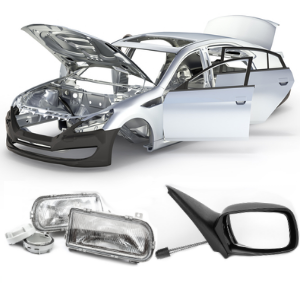
Bodywork parts at bargain pricesprompt deliveryTo the shop ⇒ |
Which versions of seat heating are available?
For driving through the winter months with comfortable heating, you have a choice of three versions of seat heating:
|
– A removable heated seat cover – Integrated seat heating mats – Replacement of the seat |
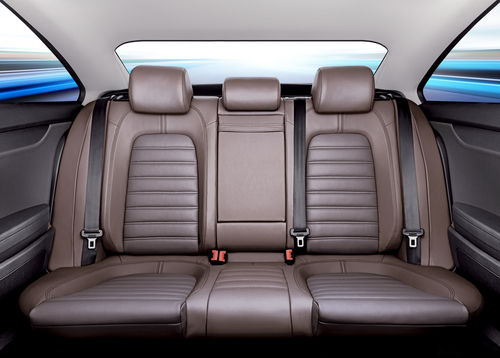 The use of seat covers is a very simple and cheap possibility for seat heating. Cables can get in the way, as those covers work via the cigarette lighter. The integration of a layer of heatable metal or carbon fibres is technically the most complicated option, although it makes the best impression if professionally executed. The replacement of the seat by a heatable model is the most expensive solution if you choose for a new article by a branded manufacturer. An alternative is taking a look at the scrapyard. You might find a heatable seat for your model series here. If it still looks presentable is a different story.
The use of seat covers is a very simple and cheap possibility for seat heating. Cables can get in the way, as those covers work via the cigarette lighter. The integration of a layer of heatable metal or carbon fibres is technically the most complicated option, although it makes the best impression if professionally executed. The replacement of the seat by a heatable model is the most expensive solution if you choose for a new article by a branded manufacturer. An alternative is taking a look at the scrapyard. You might find a heatable seat for your model series here. If it still looks presentable is a different story.
 DIY installation or go to the garage?
DIY installation or go to the garage?
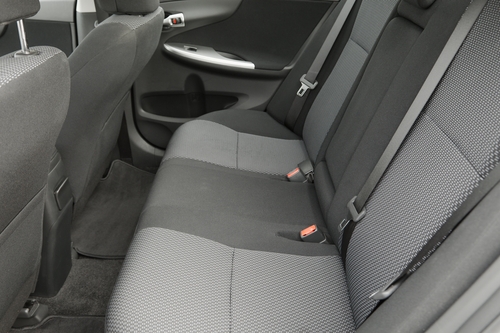 The installation of a simple heated seat cushion is easy. Integrating seat heating mats requires a great deal of knowledge and skills. The main problem are the side airbags of the seat. The integrated mats should not obstruct them. The airbags would no longer be able to perform their function, implicating a loss of safety in the passenger cabin. In the worst case, the airbags themselves could become a safety risk.
The installation of a simple heated seat cushion is easy. Integrating seat heating mats requires a great deal of knowledge and skills. The main problem are the side airbags of the seat. The integrated mats should not obstruct them. The airbags would no longer be able to perform their function, implicating a loss of safety in the passenger cabin. In the worst case, the airbags themselves could become a safety risk.
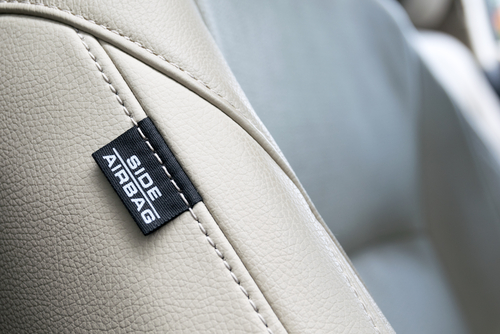 If the seats of your older car have side airbags, the retrofitting must be talked through with a professional. Complications arise only for the integration of the seat heating in the seat. The wiring and connection to the car electronics can be compared with retrofitting other electric components. If you want to save money and avoid the trouble of visiting a garage, you better choose removable heated cushions.
If the seats of your older car have side airbags, the retrofitting must be talked through with a professional. Complications arise only for the integration of the seat heating in the seat. The wiring and connection to the car electronics can be compared with retrofitting other electric components. If you want to save money and avoid the trouble of visiting a garage, you better choose removable heated cushions.
Our step-by-step manual for retrofitting seat heating
The exact steps for installation of a new seat heating depend on the car model and the heating itself. Nevertheless, the retrofitting can be described independently from model in the following steps:
1) Removing the seat cover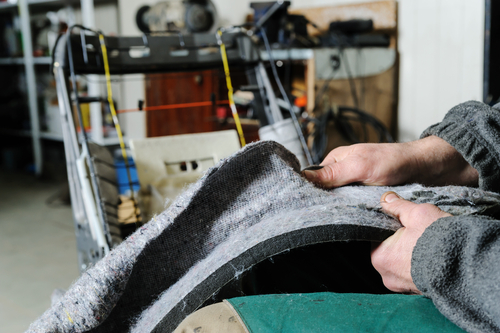 Car seats consist of two standard parts – a seat and a backrest. For integration of the heating elements the cover of both parts needs to be removed. This is only possible if it isn’t glued upholstery. Removing these covers and afterwards refitting them totally intact is hardly possible and would require the services of a garage. Car seats consist of two standard parts – a seat and a backrest. For integration of the heating elements the cover of both parts needs to be removed. This is only possible if it isn’t glued upholstery. Removing these covers and afterwards refitting them totally intact is hardly possible and would require the services of a garage.In all other models, the fabric or leather cover can be easily removed, provided it is fitted over the central filling with a zipper. Then remove the central fillings from the seats, exposing the surfaces where the heating mats are laid on. |
2) Applying and wiring of the seat heating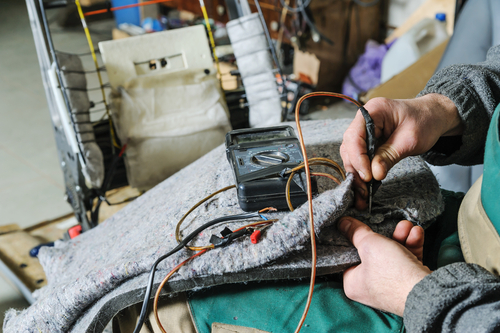 The heating elements of the seat heating are made by the manufacturer for a number of seat sizes. They might need to be cut to size. It is very important to mark the cutting precisely considering the exact course of the seating seam of the heating elements. When cutting, the side strips should remain uninterrupted, as they function as the seat heating’s positive and negative pole. The heating elements of the seat heating are made by the manufacturer for a number of seat sizes. They might need to be cut to size. It is very important to mark the cutting precisely considering the exact course of the seating seam of the heating elements. When cutting, the side strips should remain uninterrupted, as they function as the seat heating’s positive and negative pole.Application of the heating mats is provided for by most manufacturers by two-sided tape which is in most cases supplied as well. The course of the seating seam must be covered with insulation tape first and then laid out in the corresponding seam. When it is in its place, the seating seam should be shortened to prevent any contact with the positive or negative pole. If shortening is not possible, the seam needs additional insulation. |
3) Wiring and testing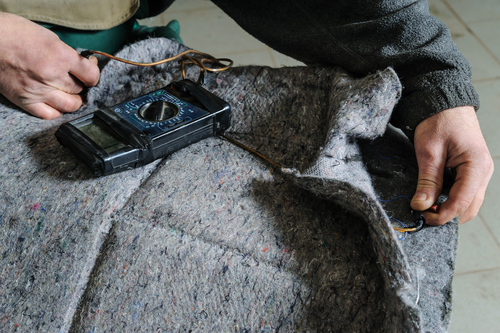 In most models, the heating elements of the backrest are connected to the heating mat of the seat. The electricity is supplied by the battery with the usual current between five and ten ampere. Depending on model you have the choice between a direct connection and a connection via a relay. The matching electric diagram is supplied along with the heating elements. In most models, the heating elements of the backrest are connected to the heating mat of the seat. The electricity is supplied by the battery with the usual current between five and ten ampere. Depending on model you have the choice between a direct connection and a connection via a relay. The matching electric diagram is supplied along with the heating elements.
Technically more complex is the wiring with the corresponding switch in the dashboard. Unlike in heating cushions, which are connected via the cigarette lighter, concealment of cables is preferable to avoid cables running through the passenger cabin. Possibly, an extension of the supplied cable for a neat, concealed connection is necessary. When the connection is applied correctly, test the fitted seat heating. The heating effect only occurs through heat accumulation and therefore you or somebody else must sit in the seat during the test phase. The full performance can only be enjoyed with a running engine. Allow yourself a little drive to test the functioning of the seat warming and in case of doubt check the electronics. |
 Concluding tips regarding your new seat heating
Concluding tips regarding your new seat heating
– If you prefer heater cushions to a real retrofitting, choose articles of OEM quality. Their format takes the presence of side airbags into account and are provided with the matching cavities. That certainty doesn’t exist with cheap products.
– Independent of the kind of retrofit, investing in a higher-grade model might be worthwhile. This guarantees an even distribution of the heat over the entire seat surface. By doing so you also increase the life expectancy of the seat heating, and there will be no need for a replacement after a few months.
Foto: Babich Alexander, Peter Gudella, zenstock, ssuaphotos, Corepics VOF, Yunava1 / shutterstock.com





 (9 votes, average: 3.33 out of 5)
(9 votes, average: 3.33 out of 5)







